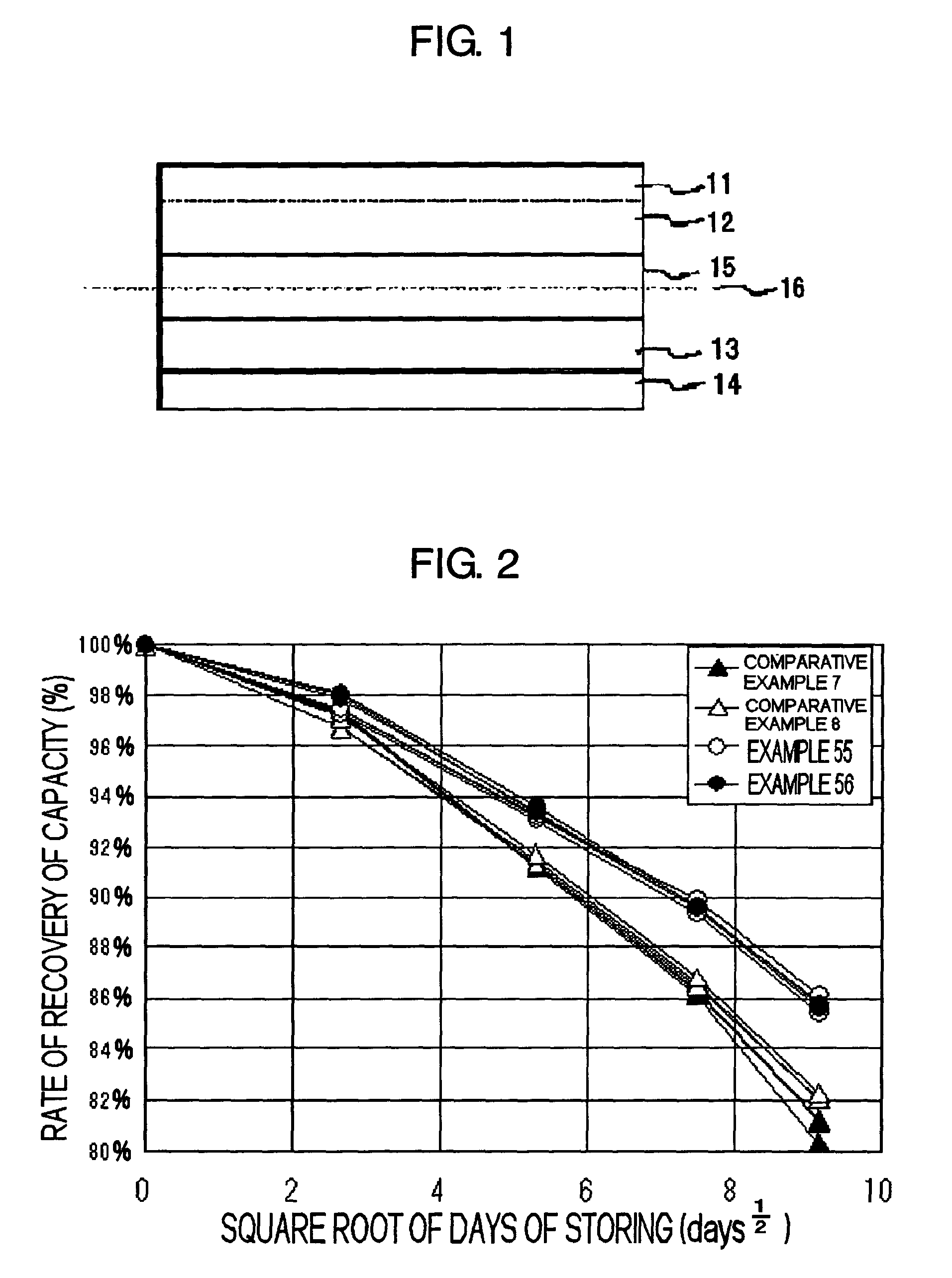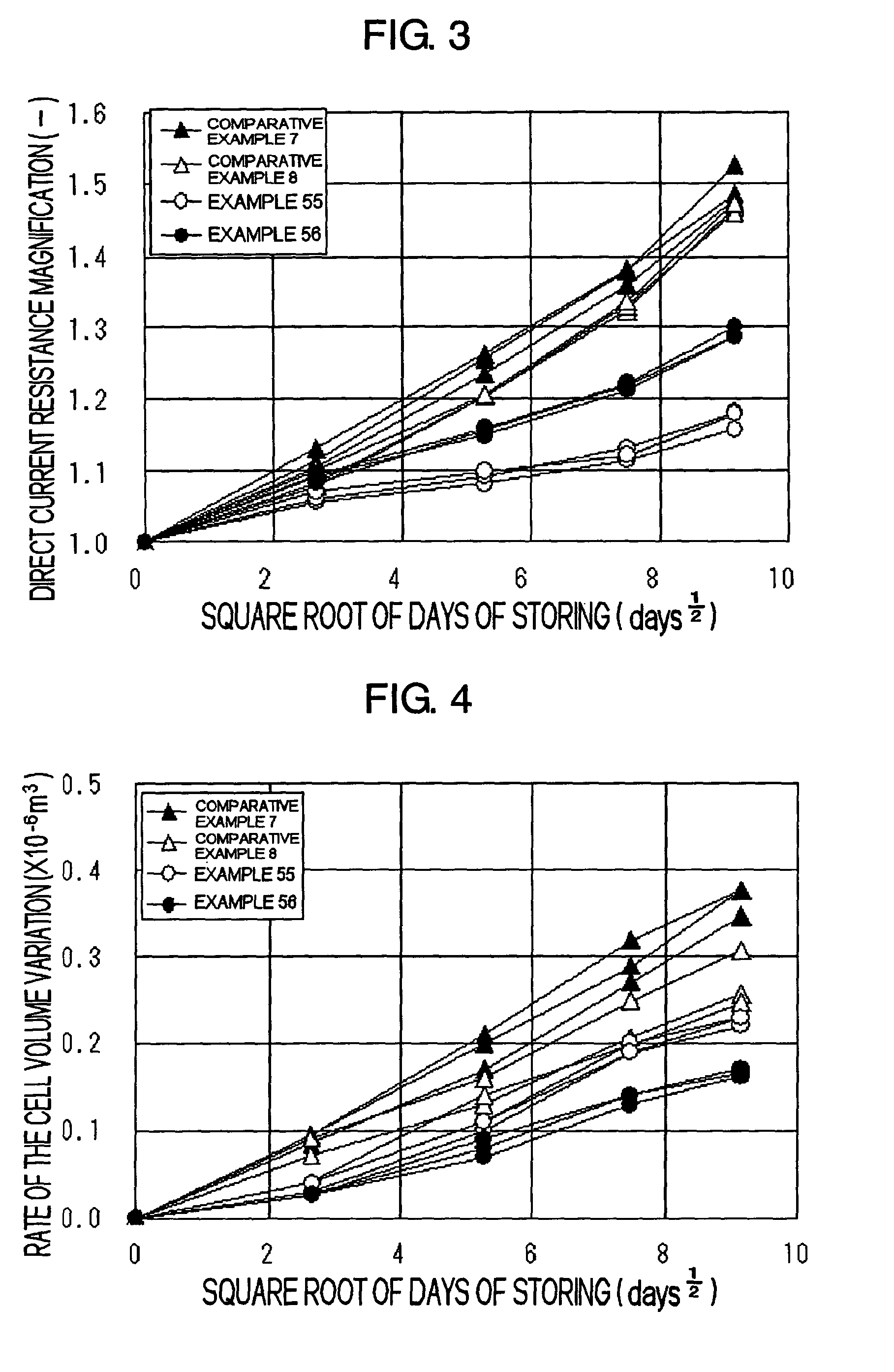Electrolyte solution for secondary battery and secondary battery using the same
- Summary
- Abstract
- Description
- Claims
- Application Information
AI Technical Summary
Benefits of technology
Problems solved by technology
Method used
Image
Examples
example 1
(Preparation of the Battery)
[0085]Preparation of the battery according to the present example will be described. An aluminum foil having a thickness of 20 μm was employed for a cathode active material, and LiMn2O4 was employed for an anode active material. A copper foil having a thickness of 10 μm was employed for an anode electric collector, and metallic lithium as an anode active material was deposited on the copper foil to a thickness of 20 μm to form an anode. A mixed solvent of EC and DEC (in a volumetric ratio of 30:70) was employed for an electrolyte solution, and 1 molL−1 of LiN(C2F5SO2)2 (hereinafter abbreviated to as LiBETI) as a support electrolyte was dissolved into the solvent, and further the compound No. 1 shown in the above TABLE-1 was added thereto to achieve a concentration of the compound No. 1 of 1% wt. Then, the anode and the cathode were laminated, between which a separator comprising polyethylene was disposed, to form a laminate packaging secondary battery.
(Ch...
examples 2 – 4
Examples 2–4
[0087]Secondary batteries were prepared in the same manner as in Example 1 except that the compound No. 1 was replaced with the compound shown in TABLE-2. The battery properties were examined in the same manner as in Example 1. The results are shown in the TABLE-2.
example 5
[0092]A secondary battery was prepared in the same manner as in Example 1 except that: LiBRTI for the support electrolyte was replaced with LiPF6; and the anode was prepared by applying onto a copper foil a paste mixture of graphite power, a binder of a mixture of a solvent of N-methyl-2-pyrrolidone and polyfluorovinylidene dissolved in the solvent and an electric conductor material, and drying the resultant copper foil. In this Example, a cylindrical secondary battery was prepared. The battery properties were examined in the same manner as in Example 1. The results are shown in the TABLE-3.
PUM
 Login to View More
Login to View More Abstract
Description
Claims
Application Information
 Login to View More
Login to View More - R&D
- Intellectual Property
- Life Sciences
- Materials
- Tech Scout
- Unparalleled Data Quality
- Higher Quality Content
- 60% Fewer Hallucinations
Browse by: Latest US Patents, China's latest patents, Technical Efficacy Thesaurus, Application Domain, Technology Topic, Popular Technical Reports.
© 2025 PatSnap. All rights reserved.Legal|Privacy policy|Modern Slavery Act Transparency Statement|Sitemap|About US| Contact US: help@patsnap.com



